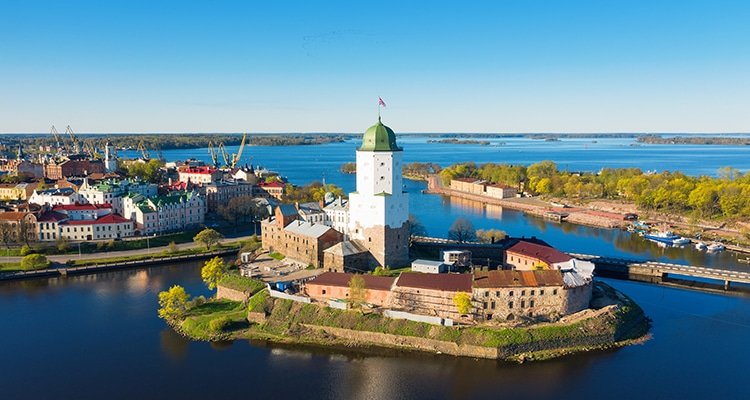-
The United States remains the primary OECD destination for family migrants. In 2022, 723000 migrants obtained lawful permanent resident status in the United States for family reasons, a 14% increase compared with 2021
-
Mexico, India and China were the top three nationalities of newcomers to US in 2021. Among the top 15 countries of origin, India with over 46800 immigrants registered the strongest increase
India has the highest number of citizens who choose to obtain citizenship in other countries among the migrant population. According to a recent report from OECD titled ‘International Migration Outlook: 2023, in the top 50 countries of origin of new immigrants to the OECD, 2020-21, India remains the main source of origin for the second consecutive year, accounting for 7.5% of all flows and sending out 4 lakh new migrants, according to a report in financialexpress.com.
Living in America remains the first choice for most Indian immigrants. The United States remains the primary OECD destination for family migrants. In 2022, 723000 migrants obtained lawful permanent resident status in the United States for family reasons, a 14% increase compared with 2021. Mexico, India and China were the top three nationalities of newcomers to US in 2021. Among the top 15 countries of origin, India with over 46800 immigrants registered the strongest increase.
Migration to OECD countries is at unprecedented levels. In 2022, in the OECD, 145 million people lived outside their country of birth, a quarter more than ten years earlier. According to the report, more than one in three OECD countries registered their highest levels in at least 15 years, with several countries, such as Canada and the United Kingdom, reporting the highest figures on record.
With more than 6 million new permanent immigrants (not including Ukrainian refugees), permanent-type migration to OECD countries reached a record level in 2022. This represents a 26% year-on-year increase and a 14% increase compared to 2019. Most of the increase was driven by the increase in humanitarian migration (excluding Ukrainian refugees) and labour migration.
In many OECD countries, permanent-type migration was higher in 2022 than in any of the previous 15 years. This was the case in Canada and New Zealand, and in many OECD European countries like Belgium, Denmark, Finland, France, Ireland, Luxembourg, the Netherlands, Spain, Switzerland and the United Kingdom).
Family migration remained the main category of permanent migration to OECD countries, accounting for 40% of the total.
Acquisitions of citizenship in OECD countries reached a record level in 2022. The number of new permanent-type immigrants in the OECD, reached an all-time high of 6.1 million in 2022. This is about 26% more than in 2021 and 14% more than in 2019.
In 2021, the composition of migration flows by country of origin returned to its pre-COVID-19 rankings, although China (227000) has not reached its previous level and remains far behind India (407000)
All top four destination countries (The United States, Germany, the United Kingdom and Spain) registered large year-on-year increases, between 21 and 35%. The increase was smaller in Canada (8%) the fifth destination country.
The United States alone accounted for 1.05 million new permanent-type migrants, and the other four countries for between 440000 and 650000 each.
In all top five countries, permanent-type migration was higher in 2022 than in 2019, pre-pandemic. This is notably the case in the United Kingdom, Spain and Canada (between 19 and 38%). In these countries, permanent-type migration was at a higher level than in any of the previous 15 years.
New Zealand experienced the largest year-on-year percentage increase in permanent-type migration, counting a total of 155000 new permanent-type migrants, almost triple the record of the past 15 years.
In 2022, family migration remained the primary category of entry for new permanent-type migrants, representing 40% of all permanent-type migration, a relatively stable share over time. The share of labour migration has increased over time. While in 2022, labour migration represented 21% of permanent-type migration, it accounted for only 16% in 2019.
***********************************************************
Readers
These are extraordinary times. All of us have to rely on high-impact, trustworthy journalism. And this is especially true of the Indian Diaspora. Members of the Indian community overseas cannot be fed with inaccurate news.
Pravasi Samwad is a venture that has no shareholders. It is the result of an impassioned initiative of a handful of Indian journalists spread around the world. We have taken the small step forward with the pledge to provide news with accuracy, free from political and commercial influence. Our aim is to keep you, our readers, informed about developments at ‘home’ and across the world that affect you.
Please help us to keep our journalism independent and free.
In these difficult times, to run a news website requires finances. While every contribution, big or small, will makes a difference, we request our readers to put us in touch with advertisers worldwide. It will be a great help.
For more information: pravasisamwad00@gmail.com









